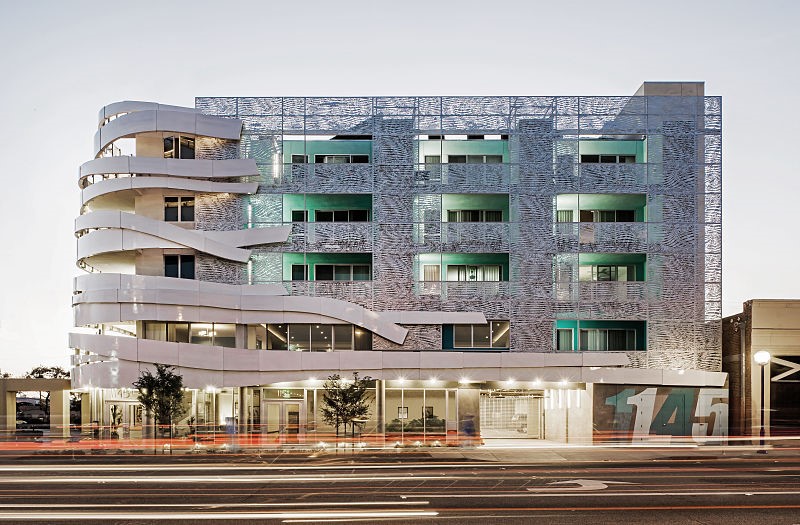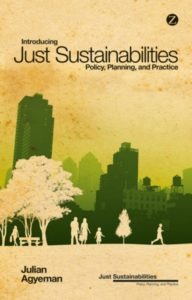

Blog
The way in which buildings are designed, constructed & maintained has tremendous influence on the equity (or inequity), and the justice (or injustice), of our society.

The causes of social inequity and injustice are deeply rooted within the systems that shape our society, including the built environment. The built environment represents the literal foundation of our society’s presence in the world – from the smallest rural community to the largest city. The way in which buildings are designed, constructed, and maintained has a tremendous influence on the equity (or inequity), and the justice (or injustice), of our society. The way we build and the strategies we employ can either continue to worsen social issues or can lay the groundwork for significant progress to be made on these issues in places around the world.
The building industry continues to make progress on reducing negative environmental impacts of the built environment. In fact, we’re increasingly seeing practices and strategies go beyond “sustainable” to “regenerative,” with such goals as net-positive energy, water, and waste. Now, the industry is reckoning with the urgent need to integrate social equity into its definition of sustainability in order to also reduce negative social impacts of the built environment. We might accelerate the process by framing the goal as “net-positive equity.”
Sustainability advocates in all sectors have come to recognize that an environmentally “sustainable” solution is not really sustainable if it is not equally accessible to all. Moreover, if health and economic benefits are unevenly distributed, the disparities in access and opportunity that form the basis of social injustices are reinforced. This recognition is driving efforts within the sustainable building community to develop an expanded definition of what constitutes a healthy, sustainable, and resilient built environment—a definition that fully accounts for the social component of the “triple bottom line” model of sustainability. (If You Are Serious About Sustainability, Social Equity Can’t Be Just Another Add-On)

A useful way to frame this approach is through the concept of “just sustainabilities”, which acknowledges that a pervasive “equity deficit” exists in most sustainability practices. The concept asserts that “a truly sustainable society is one where wider questions of social needs and welfare, and economic opportunity are integrally related to environmental limits imposed by supporting ecosystems”[1].. A just definition of sustainability would more accurately depict the ways in which the health and welfare of all people is inextricably intertwined with the health of the environment. Any effort that hopes to be effective at improving the quality of life for people, as with any effort to preserve or regenerate environmental quality, must be based in the understanding that social needs and environmental needs are interdependent. Studies have identified inequality as a primary cause of environmental degradation. Simultaneously, we know that the effects of environmental crises, such as climate change, by disproportionately burdening communities that were already disadvantaged, are greatly exacerbating social problems around the world.
The NAACP initiative Centering Equity in the Sustainable Building Sector (part of the organization’s Environmental and Climate Justice Program), supports the idea that efforts to advance and secure social equity must begin by providing all people equitable access to a healthy, sustainable, and resilient built environment in which to live, learn, work, and play. Achieving this would have cascading positive effects throughout communities, helping to make them healthier, more resilient, and more just.

The NAACP’s report “Getting Beyond Green: A Baseline of Equity Approaches in Sustainable Building Standards,” emphasizes that the communities that are most negatively impacted by an “unhealthy, energy inefficient, and disaster-vulnerable” built environment are also “underrepresented in the design, construction, and occupancy of sustainable, regenerative, healthy buildings.” The sustainable building sector has a lot of work to do to address this very complex and enduring issue, but fortunately several strategies have recently been developed and incorporated into green building programs. Programs including LEED©, the WELL Building Standard™, and the Living Building Challenge© can be used to integrate social equity goals into the design and development process of any project. Stay tuned for Part 2 of this blog in which we will demonstrate how these strategies can be integrated into planning, designing, constructing, and operating a sustainable building.
Additional Links:
Introducing Just Sustainabilities: Policy, Planning and Practice
Toward Just Sustainability in Urban Communities: Building Equity Rights with Sustainable Solutions
Centering Equity: The Quest for Justice in Green Building
Check out Part 2 of this blog, where we take a deeper dive into social equity and green building.
[1] Julian Agyeman. Just Sustainabilities Development in an Unequal World. Edited by Julian Agyeman, Robert D. Bullard and Bob Evans, The MIT Press, 2003. p. 78
Contributor: James Wilson, Sustainability Consultant
Steven Winter Associates